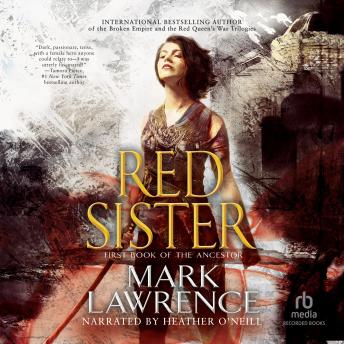
Meanwhile, a parallel narrative in not-quite-alternating chapters, shows Nona and the sisters of Sweet Mercy, three years later, preparing for a big, violent showdown with Sherzal and the approaching, massive armies of the Scithrowl and the Durn that are closing in on the empire.

The two girls flee to Zole’s ice-bound home, and we finally get to experience the beautiful and forbidding ice that is much talked about in the earlier novels. Zole and Nona take the shipheart they retrieved from Sherzal’s palace and part from the rest of the escaping company so the others will not be followed by Sherzal’s guard and the powerful Noi-Guin warriors.

Holy Sister begins where Grey Sister ends, after Zole has saved the nuns and some other folks in their escape from Sherzal’s palace. On the surface it sounds simple, but Lawrence’s extremely creative, dense world-building and his attention to the most minute details make Holy Sister a tour-de-force of speculative fiction writing. People living near the encroaching miles-high ice walls are losing land and are forced to migrate into other people’s land, which causes the main conflict of the story, war. The problem that drives the story’s conflict, as revealed in the earlier volumes as well, is that the focus moon is no longer able to hold back planet Abeth’s ice crust from closing in on the Corridor of habitable land that it keeps warm.

If there is such a thing, then Holy Sister, the third volume in Mark Lawrence’s Book of the Ancestor trilogy, is setting driven. Readers and writers often describe novels as being character driven or plot driven.


 0 kommentar(er)
0 kommentar(er)
